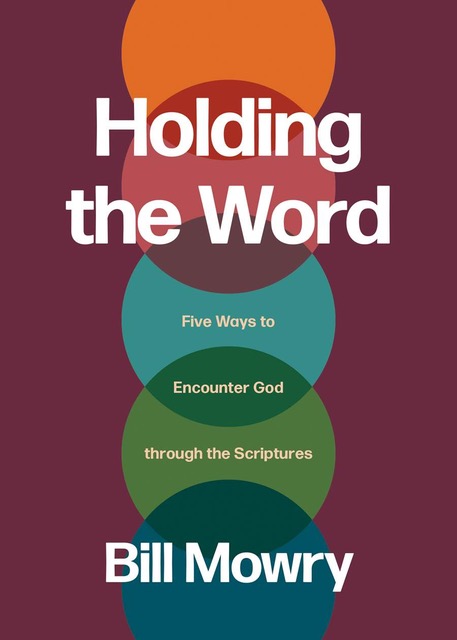Crowds and disciplemaking go together.
Numbers rule the day. Politicians count the number of people at their rallies. Churches count attendance. We count and compare our Facebook or Twitter followers. Numbers and crowds measure success.
I’ve always had a “thing” with crowds. Disciplemaking is a ministry of the small and the slow, a work hidden from the public eye. I’m cautious about crowds because crowds can appear to be “a mile wide and an inch deep.” Disciplemaking seems the opposite of attracting crowds . . . then I noticed the crowds around Jesus.
Jesus attracted crowds. He seemed to live life in a crowd. Mark’s gospel mentions crowds thirty-two times in sixteen chapters. Here’s a small sample.
large crowds surrounded Jesus – Mark 1:45
they couldn’t bring him [a paralytic] to Jesus because of the crowd – Mark 2:4
Jesus taught the crowds – Mark 2:13
so the crowd wouldn’t crush him – Mark 3:9
a very large crowd soon gathered – Mark 4:1
there were about 4,000 people in the crowd – Mark 8:8
once again crowds gathered – Mark 10:1
The church’s current fascination with measuring and attracting crowds is not new. We can trace crowd counting back to Benjamin Franklin.
Franklin was impressed by the crowds that listened to the itinerant evangelist George Whitfield. He saw dollar signs in Whitfield’s success and began publishing his sermons to sell. During one of Whitfield’s preaching posts in Philadelphia, Franklin calculated how far he could be heard and the size of the crowd. Here’s how he described estimating the crowd in his autobiography:
He preach’d one Evening from the Top of the Court House Steps . . . I had the Curiosity to learn how far he could be heard . . . Imagining then a Semi-Circle, of which my Distance should be the Radius, and that it were fill’d with Auditors, to each of whom I allow’d two square feet, I computed that he might be heard by more than Thirty-thousand. This reconcil’d me to the Newspaper Accounts of his having preach’d to 25000 People in the Fields. . . .
Crowds are a natural social function today and in Jesus’s time. We all want to be a part of something bigger than ourselves. Crowds can give that satisfaction. Curiosity draws us to crowds, we want to see what’s happening. Since Jesus lived and ministered in crowds, what can we observe about his attitude towards crowds?
Jesus’s notoriety as a teacher drew a crowd (Mark 4:1-2). Even today, exemplary teachers gather crowds. Jesus’s teaching drew crowds but He didn’t teach “to” the crowd. In other words, he didn’t construct messages to please, recruit, or entice crowds. In fact, when the crowds dissipated (John 6:66), He didn’t chase after them. Teaching truth trumped pleasing the crowd.
Jesus embraced crowds because they indicated a “harvest”: “When he saw the crowds,” He concluded that “the harvest is plentiful” (Matthew 9:36-37). Crowds can indicate spiritual interest but not necessarily spiritual maturity. Jesus sensed that the people in the crowds were “harassed and helpless, like sheep without a shepherd” (Matthew 9:36). Crowds deserve our compassion not our rejection. They tell us something about what people are thirsting for.
Crowds happen because someone “sowed.” John the Baptist laid the foundation for Jesus’s ministry. “All the country of Judea and all Jerusalem were going out to [John],” records Mark (1:5). John quickly admitted that he was not the center of attention; He came to “prepare the way of the Lord” (Mark 1:3). The revival begun by John set the stage for the crowds that followed Jesus. He reaped where John had sown. Wherever there’s a crowd look for the sower (John 4:36-38).
Jesus knew the fickleness of crowds. The size and enthusiasm of the crowds around Him quickly dissipated from the multitudes on “Psalm Sunday” to the crowd shouting for His death on Good Friday to the faithful few at his crucifixion to the gathering of one-hundred and twenty a few days later. Jesus was careful not to measure his success by attendance. When many believed in him in his early ministry, he “would not entrust himself to them . . . for he knew what was in a man” (John 2:24-25 NIV). Crowds deserve compassion but not necessarily trust.
I’ve concluded that crowds are a good thing. Jesus enjoyed the crowds, spent time with the crowds, chose his disciples from the crowds, taught the crowds, and saw a harvest in the crowds. But are crowds the primary measurement of a ministry’s success? What happens when crowds are not present?
The Apostle Paul ended his life without a crowd. Sitting in his jail cell, he noted that “all in Asia” had deserted him (2 Timothy 1:15). Companions like Phygelus, Hermogenes (1:15) and Demas (4:9) left him. Author John Stott notes that “Christianity . . . trembled, humanly speaking, on the verge of annihilation.” The crowds he gathered in Acts had deserted the Apostle.
Was he depressed? Paul declared victory at the end of life (2 Timothy 4:8), having faithfully served His calling (4:8), with an unwavering hope in the gospel (1:12). He understood the principle of sowing and reaping. Sometimes crowds are absent because we’re called to sow. The seed of the gospel is a generative one — it births what we sow in future generations. This was part of Paul’s confidence. A crowd’s absence doesn’t negate the ministry of sowing. Someone will not reap unless we sow.
Now for the hard news. A consistent pattern of small crowds should bring leaders to a time of reflection and assessment. There’s usually a reason why small churches are small. Uninspired worship, unfriendly people, and lackluster preaching do not attract crowds. Here’s some other hard news. Some pastors are not meant to be pastors. By gifting and temperament, leadership may not be God’s place for them. Churches and leaders should periodically assess their lives and ministry, asking the Lord what needs to be affirmed and what needs to change.
No matter the size of the ministry, we should heed author Robert Coleman’s advice, “[Jesus’s] concern was not with the programs to reach the multitudes, but with men whom the multitudes would follow.” These men and women are the laborers — the disciplemakers — that Jesus commanded us to pray for in Matthew 9:36-38. Crowds and disciplemakers go together. Disciplemakers take the momentum of the crowds and build depth in people’s lives. Disciplemaking develops the laborers needed for leading crowds. Size gives an opportunity for disciplemaking to flourish.
Heaven will be a crowded place where “a great multitude that no one could number, from every nation, and from all tribes and people and languages, standing before the throne and before the Lamb. . . .” (Revelation 7:9). Mission is about growing the crowd! Crowds and disciplemaking go together. Let’s get ready to practice crowd control.

